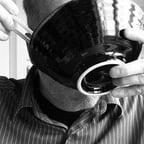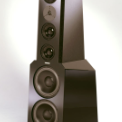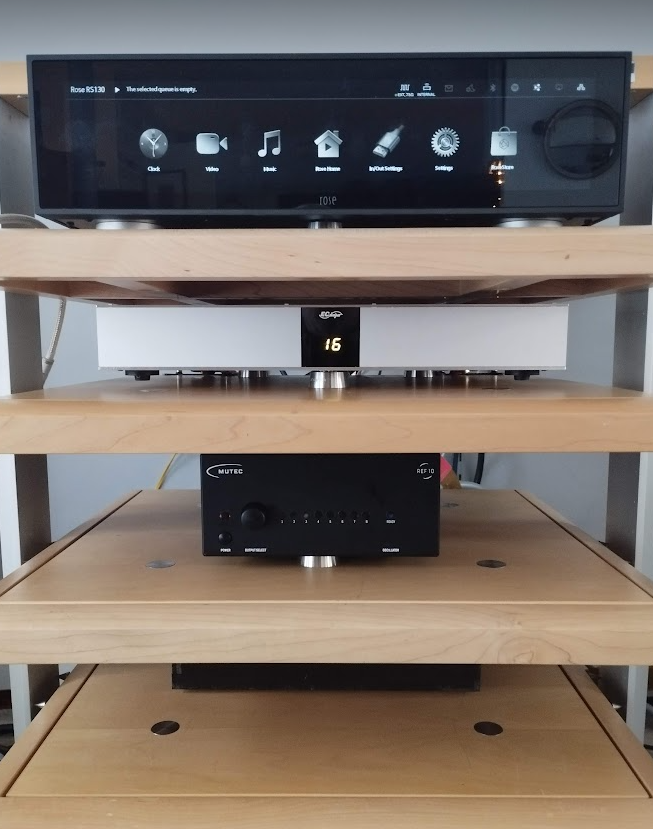Retained
-
Member Title
Intuitive Listener
Personal Information
-
Location
The Netherlands
Recent Profile Visitors
11453 profile views
-
Nice! Which PowerDAC are you using?
-
Sorry, missed this one... I have an HdmiPi Pro as well as a TransportPi AES module. The former only does hdmi/I2S and the latter spdif RCA, BNC and optical. In theory you can use both in one stack but due to space limitations (height) I choose one depending on my setup. It is quite easy to swap them. Currently I use optical out to the PD-SX.
-
Yes, and here it made a subtle positive difference in terms of SQ. But note that my USB is isolated via a two-box converter, so it is streamer > USB > fiber > USB > UT192 > Toslink or ElectroTos > PD-SX In the meantime I have substituted the UT192 with a customized UT96 with ET as well as Toslink output (kindly sent to me for comparison by John and Gordon). The theory is that the latter is less noisy, but the difference in SQ is very small. I must have been bewitched by the ECD sorcerers as they have turned an avid DSD adapt into a modest PCM96 guy :-) I prefer my Canadian Toslink cable to the stock ElectroTos. However I am talking to an audio buddy (who used to contribute to this thread) about the possibility of making a custom ElectroTos with better (but not too heavy!) coax cable.
-
The streamer and UT192 have different functions so hard to compare. The UT192 just converts USB to either Toslink or ElectroTos. It requires something like a streamer before it. Or maybe you had the U192ETL? That was a different beast. ECD device names are not very intuitive :-) By the way, I usually use my streamers in stand alone mode, i.e. playing from a local drive. In the case of the Rose this is the mounted SSD, and in the case of the Ian Canada stack a ramdisk created with GentooPlayer. When playing an album, the (fiber) ethernet cable can even be disconnected, but this does not make much of a difference anymore as no audio data travel over it. This a pic of my DIY streamer with the lid off. To its right are two boxes that provide USB isolation (USB > fiber > USB) and that I could try together with the UT192.
-
Thx :-) https://audiotweaks.nl/ungnoi/ There is no distortion. And clipping cannot be introduced at that stage I believe. Given that so far I can play everything up to 23 implies that 24 is too loud for me, but take into account that I am using convolution. Without that, I would probably not go above 19 or 20. I have no neighbours so tend to play pretty loud, but certainly not extremely loud. I wonder whether I ever get above 80 dB at listening position.
-
The rack got emptier :-) However I am now using my other DAC (Leaf Audio CMD27) and power amp (Reimyo KAP-777) as an oversized headphone rig to provide enough juice for my power greedy TakeT headphones. For streamers/clocking see my previous post of Feb 3. And forgot to say: I use 3 Ungnoi anti-vibration feet.
-
Still very happy with the PD-SX. Brief update: I replaced the T2A fuse by a Synergestic Research Purple T2.5A fuse. Not sure whether I could hear the difference, but I did not try very hard. Also, I non-invasively added two spades to the SX's rear feet that function as ground box connectors. I think that, with two 4kg boxes attached, I now hear a slightly blacker background. The SX prompted me to change my convolution filters. The filters still address timing issues but are now only applied up to 200 Hz to mitigate room modes. The rest of the frequency spectrum is left alone. Also I managed to increase the volume of the resulting files without clipping, so all material can now be played at an attenuation setting between 14 and 23. I called John to congratulate him on the SX. He is always very friendly and candid about his designs, although my technical knowledge is insufficient to understand everything he says. He did say that the SX's magic for the most part has to do with the omission of conventional amplification, so that it achieves more in that respect than the BX or RX. When I told him of my results with different streamers and clocking, he admitted that sources can still make some difference, saying that "where there is data, there is noise" even applies to optical cables. He mentioned something about frequency bands, but I did not fully understand. When I asked him about the UT192, het said that it could be wortwhile for me to try it, so I ordered one. If it makes no positive difference SQ wise, I can return it.
-

The Purpose of Audio Reproduction
bodiebill commented on fas42's blog entry in The Art of Audio Conjuring
I do not understand the logic of this blog at all. I apply convolution not to correct the performance of the DAC but to correct the influence of my specific room. No DAC will ever be able to do that, so it has nothing to do with window cleaning. Making "the contents of a recording" (whatever that means) to be the holy grail of audio, is an utter and silly simplification. At the source end, recordings and masterings, almost without exception, are flawed efforts to create illusions of realism. And at the listener's end, a lot happens after the sound waves leave the speakers, for which the DAC cannot be blamed. Think about it. We could easily and objectively agree that some optical cables are able to play PCM192, and others are not. Do we blame the DAC for that? No. We blame the cables. So where did you get the wisdom that these cables should make no difference in the realms of f.i. noise and timing? Another silly simplification from someone for whom cerebral gratification seems to be more important than actual experience. If I disconnect the source there will be no sound, so the DAC at least requires something. (Pardon the silly example, but it helps me to think about it.) Do you really think that a DAC -- other than an inferior one -- will ever exist that only requires the source to be ON and, for the resulting SQ, is no longer sensitive to any other variations in that source? Dream on... Echo that. -
I admit that on paper it sounds disturbing. I was actually warned by another user before I bought it. However, when you actually hear it, it not a problem at all, really. At least not to me and the other owners (for as far as I know). I believe John chose not to change this behavior in order not to compromise SQ by doing so. His approach is purist. ECdesigns is not a brand to try to produce slick commercial status symbols but puts SQ first. Actually what I like about this DAC is that it appears 'untuned'. Most 5 figure DACs are tuned to please the maker's sound preference. This can be done in many ways such as FPGA, opamps and tubes. John's approach is different. He chooses to minimize noise and jitter, not by tuning things but by omitting as much as possible, confident that the result will be right and musical. I think he has succeeded: to me the PD-SX emanates rightness to a high degree.
-
The PowerDAC-SC arrived last Wednesday. It is a special device indeed. The thought that it could in theory make my current DAC, preamp and power amp redundant feels wondrous and strange. It would mean a reduction of a lot of space and of 90% of the current weight (60 kg becomes 6 kg). Surely it cannot sound as good as that heavy rig? Well, do not be mistaken. I am used to long break in times (hundreds of hours with a previous Audio-GD DAC f.i.), but for some reason I was not expecting any for the SX. But yes, there was the initial disappointment as usual. Not being able to cope with complex orchestral passages and stridency in the first hour of playing. However, already that same evening things vastly improved and I could hear how special the SX is. If the heavy rig sounds more lush, saturated, even intoxicating, with the SX the sound signature is more aristocratic, pure, and with cleaner bass. I compared it to looking through a just-cleaned window. As a consequence I also find the SX less forgiving for badly recorded or -mastered material. However, for now and for me, it is not a question of better or worse, as both rigs sound great. I will keep them both for now and will compare them without hurry. The second day the SX had settled nicely and the stridency (with f.i. high classical strings) had gone. I think I notice however that the SX -- apart from some break in -- also needs to warm up for half an hour or so to give its best. Did any of you experience this? An initial slight worry was that on some material I needed to go up to 24/24 to get the required sound pressure. But I realized that is partly due to the fact that I apply convolution, which attenuates the original to ensure headroom and avoid clipping. Luckily, I can decrease this pre-attenuation, which is fine for properly constructed correction filters. Therefore, by now, I do not expect a problem to get enough juice from the SX for my Wolf von Langa SON speakers. The attenuation steps are OK for me, no need to go finer. There is an odd doubling of volume (as confirmed by John) after changing each step, but this is so short (a small fraction of a second) that this presents no problem to the speakers or my ears. Of course I also tried with pure bitperfect playback. However without convolution both the frequency response and (more importantly) the soundstage lack coherence, and instrument placement becomes less precisely defined. It all just sounds less natural, as if my brain continuously has to decide whether to listen to the left or to the right ('ping pong effect'), whereas with proper convolution the soundstage becomes fully detached from the speakers. I tried a few Toslink cables and thought I could hear some differences. I chose the one I liked best, even though this was not capable (or only intermittently so) to do PCM192. In the meantime I ordered, based on a positive user review on another forum: https://www.sysconcept.ca/product_info.php?products_id=364 For power, I reterminated a Vovox Excelsus power cable with a good quality C7 (figure 8) connector. This cable is not shielded but with the relative immunity to noise of the optical connection and the further elimination of cable spaghetti, I expect this to be no problem. My only qualm is that the C8 power socket and the Toslink receptacle are so close together, that with the larger C7 this hinders swapping the optical cable (which I have to do to switch between audio and video). I successfully connected 3 subs. No problem there. I did notice that I needed to decrease their volume a notch as the SX delivers a strong (precise!) bass. Regarding source immunity: With my Rose RS130 streamer I first tried its internal clock and then with the external clock (Mutec Ref10 SE120). The latter sounded considerably better (blacker, more open and immersive, better bass). Next I tried the stock clocks vs the SC-Pure clocks in my DIY Ian Canada streamer, and again with the latter the SQ was clearly superior. No problem of course: I am reassured -- rather than disappointed -- that the SX is not source immune by a long stretch. (Actually I do know one or two source-immune DACs, but these sound equally bad in most configurations.) I tried my two power hungry headphones (Heddphone ONE and Taket H2 + TR2) with the proper adapter (4x banana to 4-pin XLR) and they sound absolutely great. Volume setting was similar as for the speakers (15 to 22) The SX could be worth it as a dedicated headphone amp only. Many devices nowadays come with a grounding post to connect an external grounding box, but not the SX. Any idea what a good connection point could be to try this? Sorry for the long post, I just combined my notes...
-
Thanks, that's indeed what I meant: I confused black and yellow (in my message, not in real life). John sent me an extensive dissertation on this, but the gist is he also thinks it should work with my 3 subs. By the way, for the two SVS subs, that only have a low level (RCA) connection, I am using a Focal HiLo 3 converter to attach them at speaker level in a stereo configuration (4 wires). SQ wise I always preferred speaker level.
-
I just ordered it :-) Hot-headedly? Well, there is always the 14-day cooling-off period for internet purchases in the EU...
-
P S I briefly spoke to John and he explained that the SX decrapifies and reclocks the optical signal. The latter is unusual of course as TosLink is usually treated synchronously.
-
The SX is in my shopping cart, but I did not press the order button yet... This morning I compared the optical output of my Rose RS130 streamer, using three different (PCM192 capable) toslink cables, to its USB output, and the latter sounds considerably better. The SX only does optical, hence my hesitation. I know, ECD have their own design principles, but still... By the way, the USB connection between my streamer and DAC is optically isolated.
-
How did you connect these? Are these high (speaker-) level connections in the vein of: - R (red) to the positive right speaker socket on the SX - L (black) to the positive left speaker socket on the SX - ground (yellow?) to one of the negative speaker sockets on the SX and a Speakon connector at the REL end?







